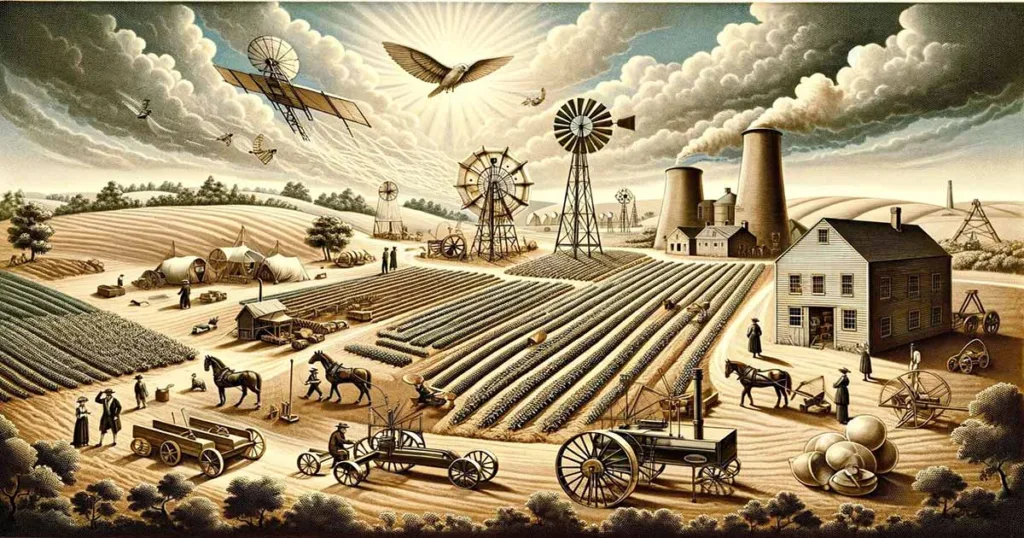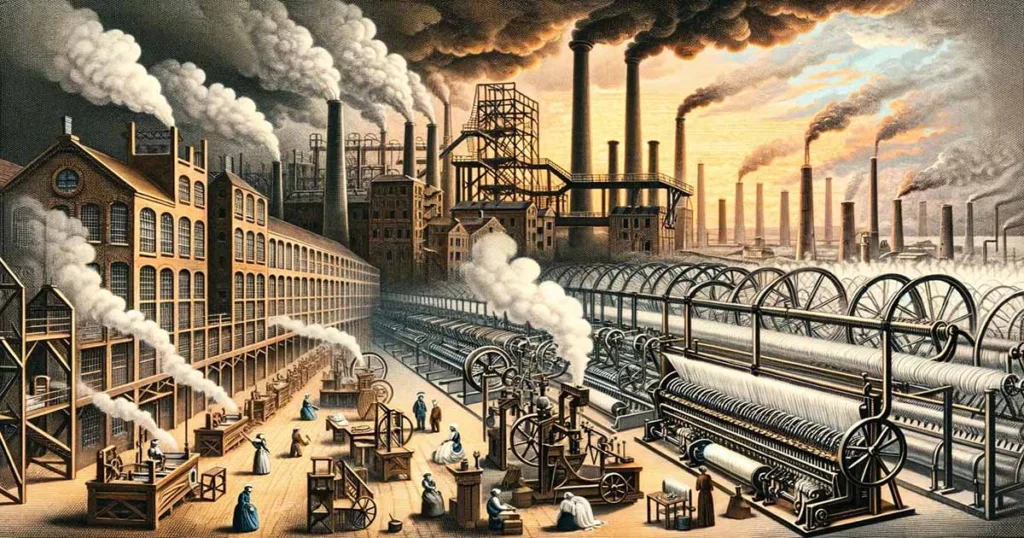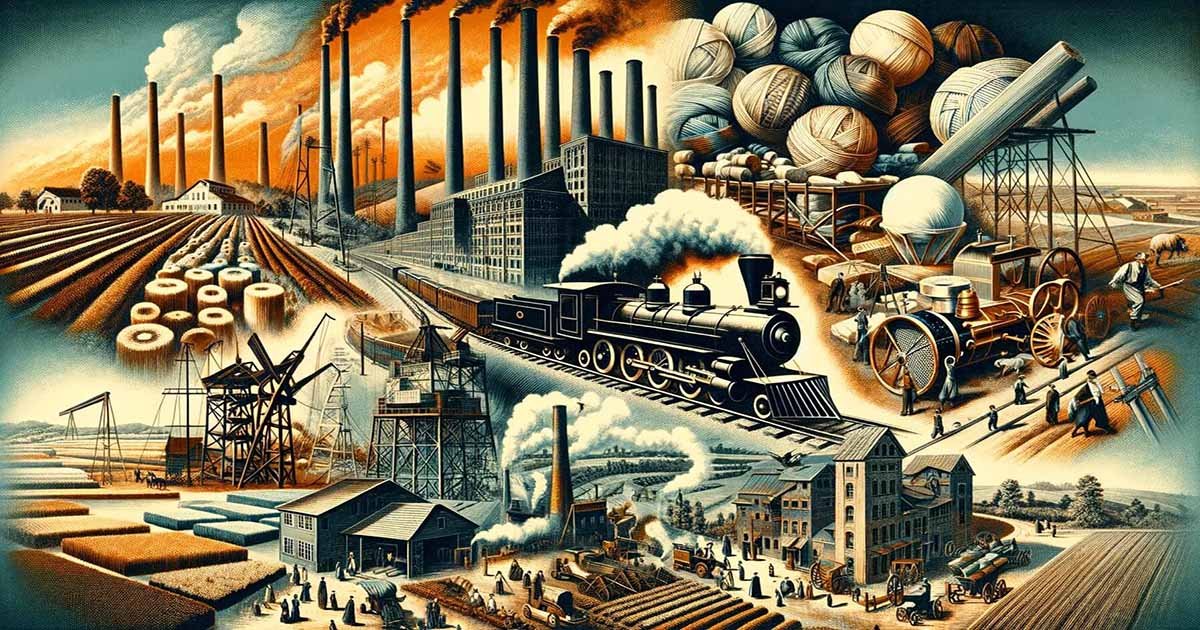Introduction
The Industrial Revolution, spanning roughly from 1760 to 1840, is often hailed as a time of dramatic change and innovation. However, beneath the surface of these groundbreaking advancements lies a story of continuity, a narrative of technological evolution that quietly but profoundly shaped the era. This article delves into these less explored aspects, revealing how continuous developments in technology paved the way for the monumental changes of the Industrial Revolution.
Historical Context
The Setting of the Revolution
Before the onset of the Industrial Revolution, most societies were predominantly agricultural, relying heavily on manual labor and simple tools. The shift towards industrialization was not a sudden leap but a gradual transition, marked by incremental advancements in technology and gradual changes in social and economic structures.
Prelude to Industrialization


The path to the Industrial Revolution was paved by a series of technological advancements. Agricultural innovations such as the seed drill and improved crop rotation techniques led to increased productivity and the creation of surplus labor. This surplus was crucial for the growth of industries. Similarly, early experiments with water and wind power laid the foundational knowledge for later developments in energy generation.
Early Technological Innovations
The Birth of Mechanization


The textile industry was the forefront of this mechanization. Innovations like the spinning jenny and the water frame were not abrupt creations but the culmination of ongoing efforts to improve textile production. These innovations transformed textile manufacturing from a domestic, artisan activity into a more efficient, factory-based process, significantly boosting production capabilities.
Steam Power: The Game Changer


The development of the steam engine, most notably improved by James Watt, was a defining moment of the Industrial Revolution. This invention was not an isolated breakthrough but a refinement of previous steam engines, such as Newcomen’s engine. It exemplified the era’s approach of building upon and refining existing technologies.
Also read: Revolution in Sewing Technology
Continuities in Manufacturing and Production
From Textiles to Heavy Industry
The expansion from textiles to heavy industries like iron and steel production represents another continuity. These industries didn’t emerge out of a vacuum; they were based on centuries of metallurgical knowledge. Innovations in iron smelting, such as puddling and rolling, were significant, yet they were advancements of pre-existing techniques.
Methodology Continuity
The rise of the factory system was another key development. While factories represented a new scale of production, the concept of organized labor was not new. The evolution from small workshops to large-scale factories was a gradual process, reflecting a continuity in the organization and management of labor.
Transportation and Infrastructure
Revolutionizing Movement


The transportation sector witnessed a similar trend. The advent of steam-powered locomotives and ships marked a significant advancement in transportation technology. However, these innovations were built upon earlier transportation methods. The development of steam power provided a more efficient and reliable means of transport, but the basic principles of movement and navigation had been long established.
Building the Backbone
The construction of canals and bridges during this period was an extension of earlier civil engineering practices. These projects were more ambitious in scale and complexity, yet they relied on engineering principles and techniques that had been developing for centuries.
Socio-Economic Impacts
Urbanization and the Workforce
The technological changes of the Industrial Revolution had profound socio-economic impacts. The migration from rural areas to urban centers was one such change. This movement was part of a broader trend towards urbanization that had been occurring
gradually over many years. The technological advancements of the Industrial Revolution simply accelerated this process, creating a need for a larger urban workforce and leading to the rapid growth of cities.
The Rise of New Social Classes
The emergence of new social classes during the Industrial Revolution was also a result of these technological and economic changes. The industrial bourgeoisie, who owned and managed the factories, and the urban working class, who operated the machinery, were products of the new industrial economy. This reshaping of social structures wasn’t abrupt; it represented a gradual shift from agrarian-based class structures, influenced by the continuous evolution of industry and commerce.
Technological Transitions and Legacy
Paving the Way for Future Innovations
The technological advancements of the Industrial Revolution did more than just redefine their own era; they set the stage for future technological developments. Innovations in steam power and mechanization, for instance, were critical in paving the way for later advances like the internal combustion engine and the widespread use of electrical power.
Beyond the First Industrial Revolution
The transition to the Second Industrial Revolution, which brought about new technologies like electricity, telecommunications, and internal combustion engines, was a natural progression from the earlier phase. This period built upon the industrial and technological base established in the first Industrial Revolution, further advancing the continuous thread of innovation.
Conclusion
The Industrial Revolution, often seen as a period of rapid and radical change, was also a time of significant technological continuity. These continuities, woven through the era’s tapestry of innovation, played a crucial role in shaping the Industrial Revolution and its legacy. Understanding these continuities helps us appreciate the evolution of technology and its enduring impact on our modern world.

